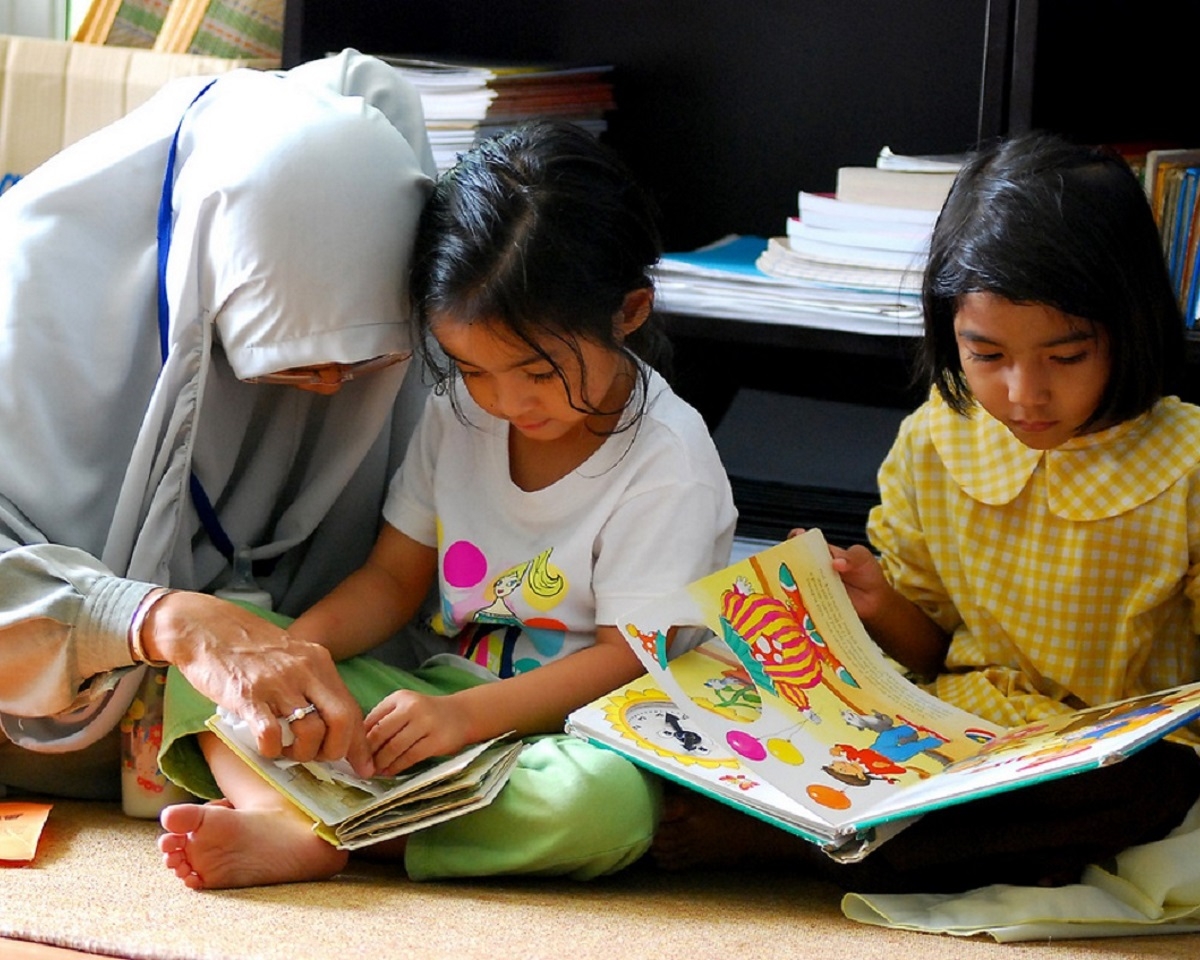Preparations for a New Homeschool Year – 6 Tips You Need to Know
Lifestyle
|
Aug 23, 2021
|
10 MIN READ

Last year's pandemic forced children to learn at home instead of attending school. Educators and parents scrambled to organize and integrate new learning methods and environments for children. There was an increased strain on parents, as they were tasked with closely managing their child(ren)'s academic careers, daily work loads and use of new educational technology. There were some who found it too much.
The point is, it’s been incredibly difficult for months. Even though many parents are thrilled with the reopening of schools, others are seeking virtual options (which are more rare now) or are continuing to homeschool their children – especially with the COVID Delta variant on the rise and the worry around unvaccinated elementary school children. There are many considerations that go into homeschooling, if this is the route you’re taking for your family. Homeschooling parents are entrusted with a great deal of responsibility, which makes preparation and organization for home instruction essential.
For parents who want to continue (or start) homeschooling, these six tips will help to prepare you and your kids for the new school year.

Image source: Pinterest
1. Organize your homeschooling space.
Having a room large enough to accommodate the daily demands of homeschooling can ease a child's transition to homeschooling. Parents may be able to allocate an entire room for home instruction, whereas others may have less space available.
Take a look at your living space and think about what you may be able to repurpose. The separate learning space allows parents-instructors to organize and store materials without them being strewn throughout the house. Furthermore, it helps establish a mindset for learning. Children will learn that it's time to roll up their sleeves, open their minds and soak up some knowledge. They will be able to set their minds to educational expectations when they have an assigned homeschool room.
By having a central meeting space, homeschooling parents can focus on their teaching, and having the necessary materials close at hand will make teaching sessions much more effective. You won’t have to search the entire home for tools or supplies.
Here are five essentials to a homeschool classroom:
- Remove clutter and distractions (no TV, video games, etc.).
- Make sure there is a place where teaching materials can be stored.
- Each student should have a storage space for their materials.
- Ensure you have the essentials and any additional materials you might need.
- Invest in comfortable and durable seating.
Some people won't be able to reserve an entire room, but there still can be options. I taught our children from a wall of cabinets in my living room for many years. The cabinets being open meant that school was in session. After the learning day was over, we cleaned up and closed them.
If you have multiple children of varying ages and grades, try to have a central location for homeschooling materials and then spread out from there. A child will not remain in one location for the entire day, even in a home classroom. Older kids will go to their rooms to complete their work. The younger ones will have time to play, etc. An ideal homeschool space will enable parents and their children to conveniently organize their supplies and concentrate on staying on track with learning at the appropriate time.

Image source: Pexels
2. Get and organize supplies.
Every year school districts and teachers send out a list of supplies. Now, you will be the one drafting your homeschooling year's list. Isn't that exciting? You'll see that teachers are not overstating the disappearance of writing instruments, notebooks and textbooks. You'll wonder how they lost all of those items without leaving the house!
Essential supplies include:
- Teaching supplies (vary by grade)
- Student supplies (vary by age)
- Classroom supplies
In addition to some essentials, you'll need specific materials and tools to deliver lessons and track each child's progress. See if other homeschoolers have materials they no longer use. After my youngest child finished preschool and K-3, I gave necessary (and expensive) early-childhood education materials to my fellow homeschoolers so they would not have to spend a lot of money. I assure you, it all adds up.
In the beginning, newbies can expect to spend an impressive amount of money setting up and running their homeschool environment. Use your common sense and don't buy every flashy thing that promises to make your child a genius. It will not.
3. Think about the curriculum.
Choosing or developing a curriculum is probably the most frustrating aspect of homeschooling. You know, curricula and getting your friends and family to understand the time constraints you're working under to teach your child[ren] … but I digress. It is up to the parents to decide if they will use virtual learning, a homeschool program, or create their own. You will burn some brain cells on this one.
- Online learning – Online learning is available in some states through virtual schools, giving homeschoolers the option of online learning. There are also virtual academies, like K-12, Keystone and Connections, with free and paid online learning. Honestly, anyone living in a state with state-funded virtual learning should do two rakat of thankfulness, because they will be spared a lot of pain and headache.
- Paid Virtual Learning – Parents living in states where virtual learning is required should seriously weigh their options. Although virtual academies may not be cheap, considering the amount of time and effort required to develop a curriculum (learning state standards, finding the right books, etc.), they may be worth dropping any money one has.
- Homeschool Program – Making a decision about a homeschool curriculum may or may not include virtual learning. Find out what will work for your child by shopping around. You can change programs if the one you choose doesn't meet your child's needs. I've done that before.
- Curriculum Development – Regarding this option, I only have one thing to say... Run! Since parents deal with so many demands when homeschooling, creating a curriculum from scratch, for multiple grades, can lead to frustration and stress. Anyone who intends to develop their own curriculum should visit the Homeschool Legal Defense Association (HSLDA) website to find out what their state's homeschooling laws are. The next step is to learn your state's educational standards and create a curriculum that aligns with them.

Image source: Clarissa Watson on Unsplash
The next step after developing a curriculum is to create a scope and sequence and lesson plans. It can be time-consuming, but it is doable for parents who are committed to building curricula that will potentially optimize their child[ren]'s educational experience.
Whichever you choose, become familiar with their state’s homeschooling laws and be prepared to be the primary manager of your child’s education
4. Create a daily learning routine.
During homeschooling days, time will be limited. It's crucial to understand the difference between creating a daily routine (repeated actions) and scheduling (agenda of activities). It has been my experience and knowledge that a stationary schedule (like those in public and private schools) is rarely, if ever, conducive to the needs of a homeschooling family. It is essential for parents to provide structure and flexibility in the face of life's mundane intrusions on the learning process.
There is no one-size-fits-all approach to homeschooling. Parents will have to go through a process of trial and error for themselves, their children collectively and individually before they find a schedule that suits them.
Below are some tips on creating a homeschool routine.
- Organize learning time slots. Instead of scheduling by subjects, set learning times. Schedule long sessions for when the parent and student(s) are most productive (morning or afternoon) and shorter sessions for the rest of the day. Decide when to teach a subject depending on time available, which may differ from lesson to lesson.
- We homeschool in the afternoons. Therefore, our longest time slots occur after the Dhur prayer. During those slots, I teach longer lessons by subject. If we do a science experiment or extensive writing session, we do it during the longer time slots. Shorter subjects like spelling or reinforcement lessons (e.g. learning the multiplication tables, working on history projects) take place in the morning.
- Allow extra time for unexpected life events. Don't try to fit five hours of schoolwork into a five-hour period. You need to plan a half-hour of downtime for every hour because things will take your attention away. Plan, for example, 3.5 hours of instruction or schoolwork for a 5-hour slot. Also, allocate time to complete administrative tasks like completing forms for your local school district, lesson planning, scheduling extracurricular activities, and preparing for the next school year. It is not possible to teach back to back all day long.
- Keep adjusting until everyone is working at their most efficiently. Don’t try to do every subject every day. Public and private school teachers do not cover every subject on a daily basis. Choose alternate days to teach subjects (i.e. teach science on Mondays, Wednesdays and Thursdays). Outside of daily exercises, such as morning meetings and rote practice, do not overburden yourself or your children every day with new concepts in every subject.
- Combine subjects whenever possible. Introduce percentages through zakah. Let children read about historical figures or events that are discussed in social studies. Learning can be expanded in so many ways.
- Make a plan, not a schedule. It's fine if you want to call it a schedule, but don't drive yourself crazy trying to make sure each subject and lesson is taught within specific time constraints. Ensure you have a general structure that gives you room to adjust it as needed.

Image source: Unsplash
5. Write everything down!
Homeschooling parents face so many challenges every day. Keeping track of as much as you can remains crucial to teaching children and keeping your momentum. Create a system for monitoring tasks and setting reminders. Some people will have no trouble managing their tasks and projects, while others may require a mix of high-tech and low-tech approaches.
- Low-tech management – You can't beat the trusty pen and paper. In spite of having multiple devices (I just bought a Chromebook, but that's for another post), I still surround myself with notebooks, pads, and post notes. In addition to strengthening memory, writing things down helps prevent forgetting important information.
- High-tech management – Check out this article, where I detail apps and high tech devices that can be helpful for managing systems, learning and content.
Even though pen and paper will always be a favorite for homeschoolers, there are plenty of task and project management apps out there that will help you stay organized.
One of my personal favorite task managers is Google Keep, where I can keep multiple lists and project goals. I set notifications across all of my devices.
Digital notebooks like Evernote and Microsoft OneNote are a convenient way to keep track of important information in addition to tasks. They have a free version and a paid version, and can be a bit intense, but they are great options for organizing digitally.
Make it your habit to use a method or combination of methods you find works for managing tasks and projects. Keep coming back to it (or them).
6. Take care of yourself!
This should be the top priority. Parenting can be stressful, producing mounds of tension. Homeschooling will increase emotional and physical demands leading to all sorts of breakdowns and burnout. Taking care of oneself is essential to coping and recovering from the inevitable times of strain and having joy sucked out of you by ungrateful children, partners, family and communities.
Yes, you read that right. It is a thankless pursuit to homeschool your children. Your kids will whine and try to break your sanity. Partners will complain about lack of attention and interrupt learning time because, hey, it's all about them. Families and communities will never miss a chance to question your capabilities or approach you with requests for your time and energy. You're already home, aren't you?
They may not intend to cause emotional and psychological distress, but that doesn't prevent you from balling in a corner, clutching your pint of ice cream to survive.
In a previous article, I discussed the importance of self-love (taking a proactive approach to safeguarding physical, mental and emotional health), as well as setting boundaries on relationships that leave me drained. Once you learn to love yourself and set boundaries, it will be easier to focus on your self-care as self-salvation.
Decompress and take care of your body, mind, and mood. One Haute Hijab article poses a great question for self-care:
What are small, consistent and actionable steps we all can take to enrich and comfort our mind, body and soul, to help us deliberately choose happiness?
Consider actions that will fortify your physical, emotional, and spiritual well-being. Listed below are a few suggestions.
- Physical – You should eat healthily (follow the sunnah on portion control), drink enough water, rest enough, exercise, go for a walk, bathe and groom yourself, get a message, hug yourself and declutter your environment
- Emotional – Keep a gratitude journal, offer yourself daily affirmations, reflect on your accomplishments (don't focus on negatives), daydream, talk to a friend, do something you've always wanted, stop when you're told to, read a book for fun, entertainment, or inspiration.
- Spiritual – Set up a sacred space, pray more than five times every day (or at least get your five done on time), get to know the Quran, engage in dhikr or meditation, learn to be alone with Allah (S) and appreciate the beauty of His creation.

There is no one who can love you more than you can love yourself. Thus, it is important to realize that we must take care of ourselves, love ourselves, set boundaries and engage in productive self-care to rebuild our strength and get back into the trenches of homeschooling.
Bismillah and good luck on your homeschooling life, or whatever type of learning your child(ren) will be engaging in each year. We pray that Allah (S) protects our children and ourselves and helps facilitate healthy learning.
Subscribe to be the first to know about new product releases, styling ideas and more.
What products are you interested in?

